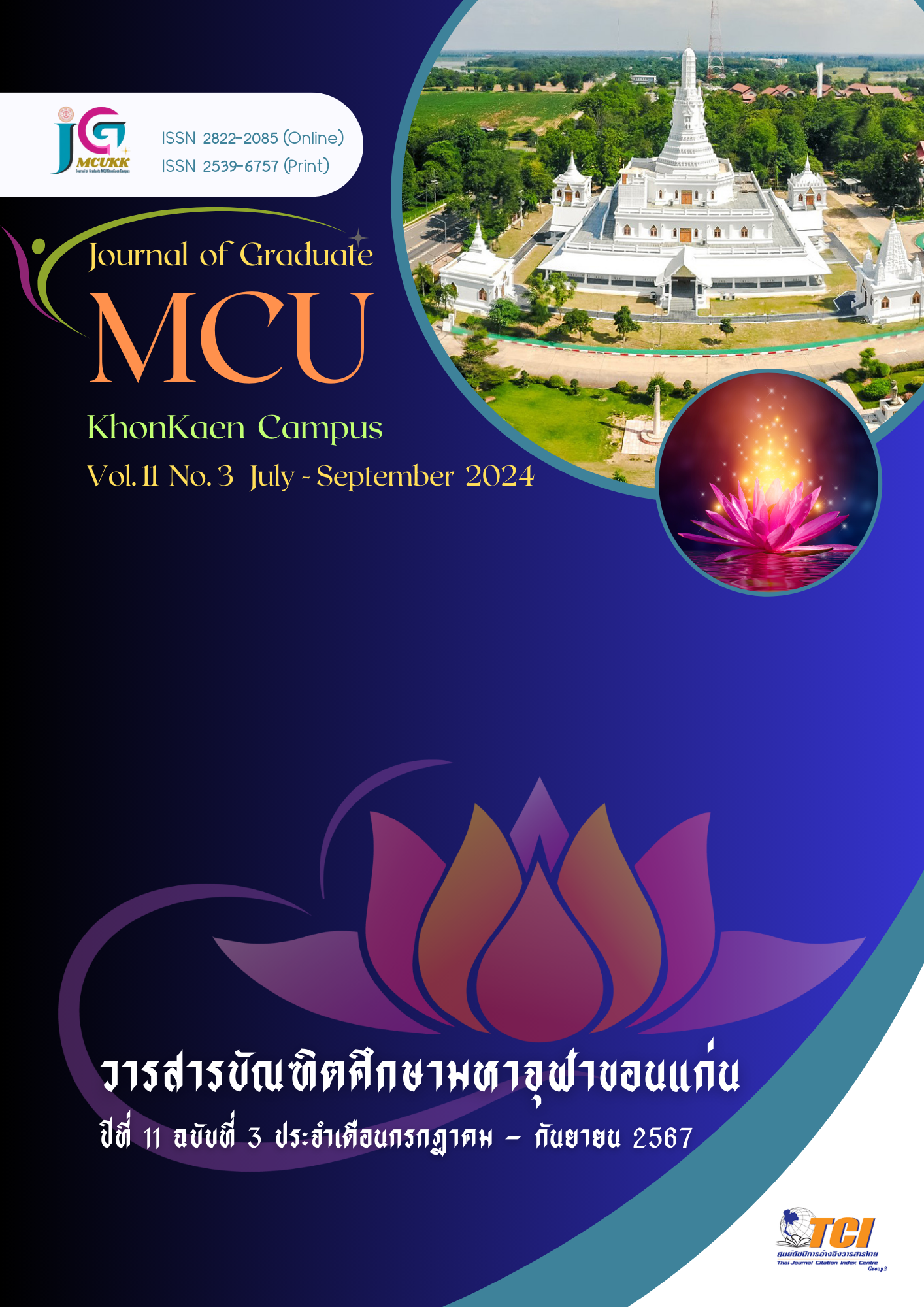The Improvement of Learners' Academic Achievement using Instructional Animation Media on Flux-Covered Arc Welding
Main Article Content
Abstract
The objectives of this research are: 1) To create an educational animation cartoon on the topic of welding electrodes. 2)To determine the quality of the educational animation cartoon on the topic of welding electrodes. 3) To measure the learning achievement of students who study through the educational animation cartoon on the topic of welding electrodes.4) To assess the attitudes of students towards the educational animation cartoon on the topic of welding electrodes. The sample group used in this research consists of 20 second-year students in the Automatic Mechanical Engineering Program at Rajamangala University of Technology Isan, Khon Kaen Campus. The research tools include: 1) The educational animation cartoon on the topic of welding electrodes. 2) Content Quality Assessment Form and Animation Media Evaluation Form 3) The learning achievement test. 4) The questionnaire measuring students' attitudes. Quantitative data analysis employs statistical methods such as mean, standard deviation, and hypothesis testing using the pair sample t-test.
The research findings indicate that: 1)The developed animated teaching media on welding electrode met the required quality standard of not less than 80%. 2) The content quality of the animated teaching media on welding electrode was rated as good, with an average score of 4.13, which is 82.6%. The animation quality was rated as very good, with an average score of 4.55, which is 90.5%. 3)The learning achievement using the animated teaching media on welding electrode was significantly higher than before using the media at the 0.05 level of significance. 4) Learners' satisfaction with the developed animated teaching media on welding electrode welding was rated as very high overall.
Article Details

This work is licensed under a Creative Commons Attribution-NonCommercial-NoDerivatives 4.0 International License.
References
กระทรวงศึกษาธิการ. (2551). หลักสูตรแกนกลางการศึกษาขั้นพื้นฐาน พุทธศักราช 2551 ปรับปรุง 2561.http://academic.obec.go.th/images/document/1559878925_d_1.pdf
ธรรมศักดิ์ เอื้อรักสกุล. (2552). การสร้างภาพยนตร์ 2D Animation. ธุรกิจการพิมพ์.
บุญชม ศรีสะอาด. (2535). การวิจัยเบื้องต้น. (พิมพ์ครั้งที่ 2). สุวีริยาสาส์น.
ศศิลักษณ์ ไชยตัน อาฉ๊ะ บิลหีม สาวิตรี พิพิธกุล และทักษิณา นพคุณวงศ์ (2565). การพัฒนาสื่อการสอน ด้วยการ์ตูนแอนิเมชัน 3 มิติ เรื่อง การคัดแยกขยะ. วารสารวิทยาศาสตร์และเทคโนโลยี มหาวิทยาลัยเซาธ์อีสท์บางกอก, 2(3), 52-61.
สมนึก ภัททิยธนี. (2546). การวัดผลการศึกษา. มหาสารคาม: มหาวิทยาลัยมหาสารคาม.
Arumugam, S. & Nirmala, N. (2017). Science animation and students' attitudes. IGI Global.
Mildmildnatcha22. (2019). Animation. https://mildmildnatcha22.wordpress.com/2019/01/01/.
Njiku, J., Maniraho, J.F., & Mutarutinya, V. (2019). Understanding teachers’attitude towards computer technology integration in education: A review of literature. Education and Information Technologies, 24(5), 1231-1248.
Pinto, T.R.C., de Castro, D.S., Bringuente, M.E., Sant'Anna, H.C., de Souza, T.V., & Primo, C.C. (2018). Educational animation about home care with premature newborn infants. Revista Brasileira de Enfermagem, 71(Suppl.4), 1604-1610.
Tafakur, Yudantoko, A. & Sudarwanto. (2020). The development of educational media based on the flipped classroom model on practical lesson in vocational education. Journal of Physics: Conference Series, 1446(1), 012015.

